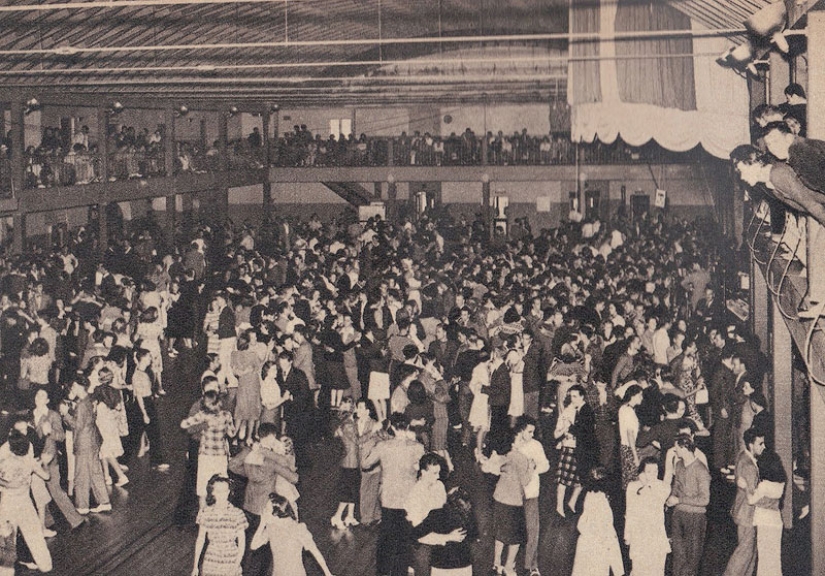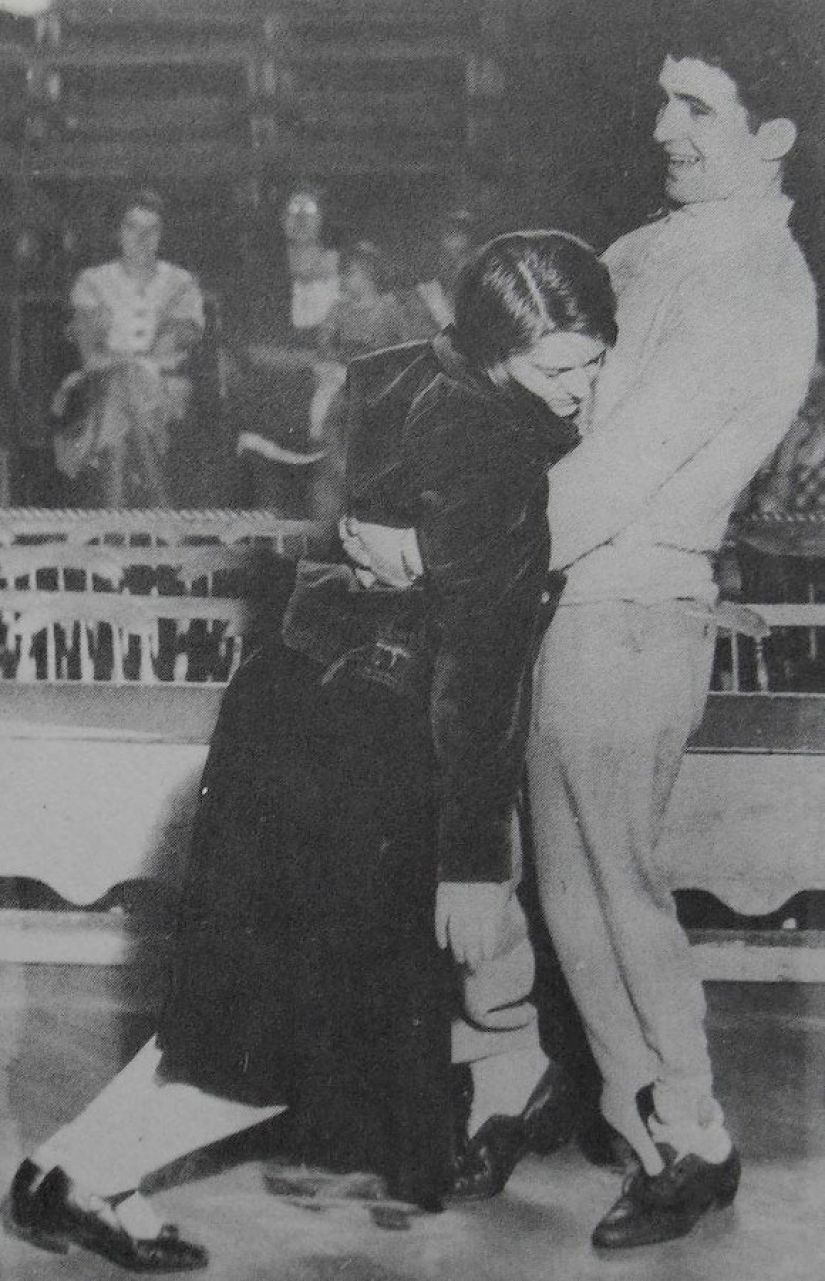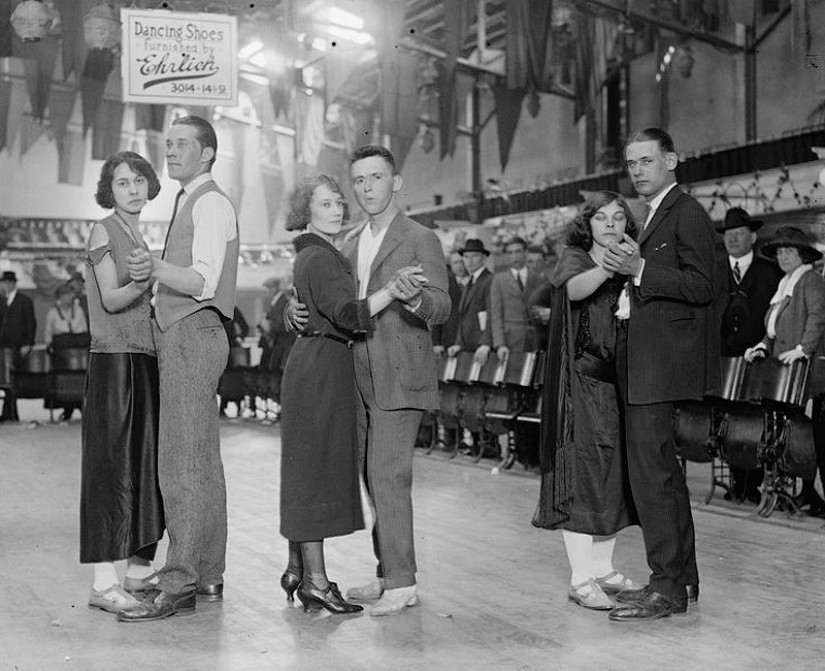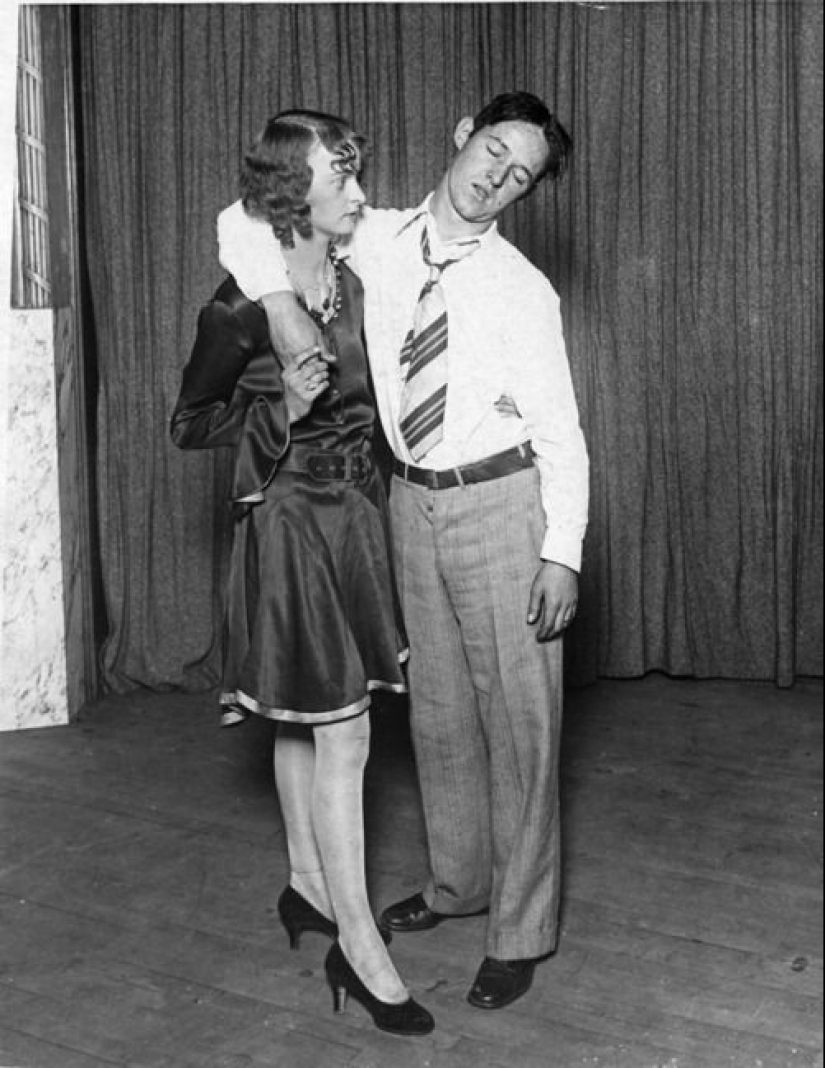Dancing till you drop at dance marathons of the 1920s and 30s
Categories: History | North America
By Pictolic https://pictolic.com/article/dancing-till-you-drop-at-dance-marathons-of-the-1920s-and-30s.htmlDuring the Great Depression, a crazy fad called "dance marathons" arose in the States. They lasted for hours, weeks, even months. It was a strange sight — emaciated, barely moving people who slept, ate and, perhaps, did not defecate on the move.

The stock market crash of 1929, which led to the Great Depression, became the most significant economic catastrophe of the industrial world. By 1931, shares were worth only 20% of the face value of 1929, industrial production had fallen by half, and one in four was unemployed. By 1935, half of American banks and companies were bankrupt. Even the Ford Motor Company, the largest employer in the country, was closing its branches.
Millions roamed the country in search of at least some work, begging and stealing. "Northern Pacific Railway" estimated the number of tramps thrown out of freight cars at 683 thousand people per year! In this era of broken hopes and empty pockets, one of the most disgusting forms of the entertainment industry flourished — dance marathons, which became a way for some to distract themselves from their suffering by watching others, and for others — a means of livelihood.

Dance marathons, the "poor man's nightclub," as they were called, arose in the early 1920s as an innocent hobby, along with contests for the largest number of pies eaten. The first official dance marathon can be considered the "Audubon Ballroom Marathon", which began on March 30, 1923 in New York. The first record was also set there — Alma Cummings danced for 27 hours.

By the early 1930s, dance marathons had become a very profitable business. There is something strangely fascinating and attractive about watching people on the edge — the organizers played on this love of painful agony. A lot of people were feeding around the marathons — doctors and nurses, waiters, musicians, bouncers.
Many cruised across the country from one marathon to another, thus ensuring their existence. Some participated in marathons in the hope that "talent hunters" would notice them and offer a contract. But only a few were so lucky — for example, June Howick, who attracted the attention of Hollywood agents at the "West Palm Beach Marathon" in 1934, where she danced for 3,600 hours almost without stopping

The marathons were endless, they lasted for weeks and months, it was necessary to dance around the clock. During the first hundred hours, participants were usually allowed to rest for 15 minutes every two hours, sometimes a two-hour nap was also included. For the next hundred hours, 15 minutes were given every three hours and so on. It was even necessary to eat while dancing — food carts rolled out directly onto the dance floor. Success was achieved by the one who could stay on his feet for the longest time and hold his partner; the dance itself was not important — you could just stand still. At some marathons, it was allowed to change partners if your own could no longer move his legs.

A special role at the dance marathons belonged to the Master of Ceremony (MC). His main task was to entertain the audience by coming up with new tasks for the contestants. The most typical option was the so-called "derby", when after several hundred hours of dancing, participants who were already on the verge of physical and emotional exhaustion had to run along the tracks painted on the floor.
There was also a common variant in which a certain melody was turned on every two hours, and everyone had to dance in this style - otherwise they were eliminated. A good manager had to have iron nerves and some share of executioners — this "position" produced both excellent actors, for example, Red Skelton, and very odious characters like Lord Buckley.

The audience packed the stands to capacity (the entrance fee was relatively low — from 10 to 25 cents), the audience usually chose "favorites" and cheered for them — in general, the atmosphere was like at a football match. Dance marathons were the same kind of entertainment as musicals — they allowed you to escape from your own worries.

Often the organizers hired fake couples who were supposed to start a fight on the dance floor — an additional (and often expected) entertainment for the public. Many Americans went to marathons precisely to watch a women's fight. Additionally, participants could be required to sing a song by order of the public (naturally, without stopping dancing).

The organizers welcomed the partners' weddings (and this happened quite often), because it was an additional entertainment for the public — in such cases, the organizers paid for a dress for the bride, a ring and a priest or a representative of the mayor's office, who combined the couple who did not stop dancing right on the dance floor.

Several marathon participants actually died on the dance floor, but this did not stop either the participants or the audience. Often the dancers started hallucinating, which also entertained the audience — what could be more fun than watching a person chasing imaginary dogs around the dance floor?! Even more dancers died after marathons, prolonged lack of sleep took its toll and people fell into a coma, and since they were too poor for someone to take care of them, they simply did not come out of this coma.

The record in the history of dance marathons was the "Million Dollar Steel Pier Marathon" in Atlantic City, held from June 6 to November 30, 1932 (a total of 4,152 hours and 30 minutes - without stopping). The prize amount was $1,000.

By the end of the 1930s, dance marathons had become a really bloody business, and were banned in most states. But despite all the prohibitions, they continued to be carried out until the United States entered into The Second World War.

The only film at the moment showing the horror and barbarism of dance marathons (and indeed the only film on this topic) remains "They Shoot Horses, Don't They?" ("Driven horses are shot") Sydney Pollack, filmed in 1969. Highly recommended for viewing, although it is a toned down version of a much tougher book by Horace McCoy, written in 1935.

Now there are attempts to revive dance marathons — in a limited time frame (maximum — a day) and with noble goals (such as, for example, a dance marathon held in February 2002 by the University of Idaho in favor of the "Red Cross"). Only this thought creeps in involuntarily: the dance marathons of the 1920s also lasted only two days…
Recent articles

Norway is a northern country and most of the year it doesn't matter with bright colors there. This is probably why the conceptual ...

It is very difficult to scold your pets! Even when they steal food from the table, spoil things or litter the apartment… After ...

Gradimir Smudja is a Serbian artist, illustrator, and comedian whose work blends humor, surrealism, and a deep respect for art ...